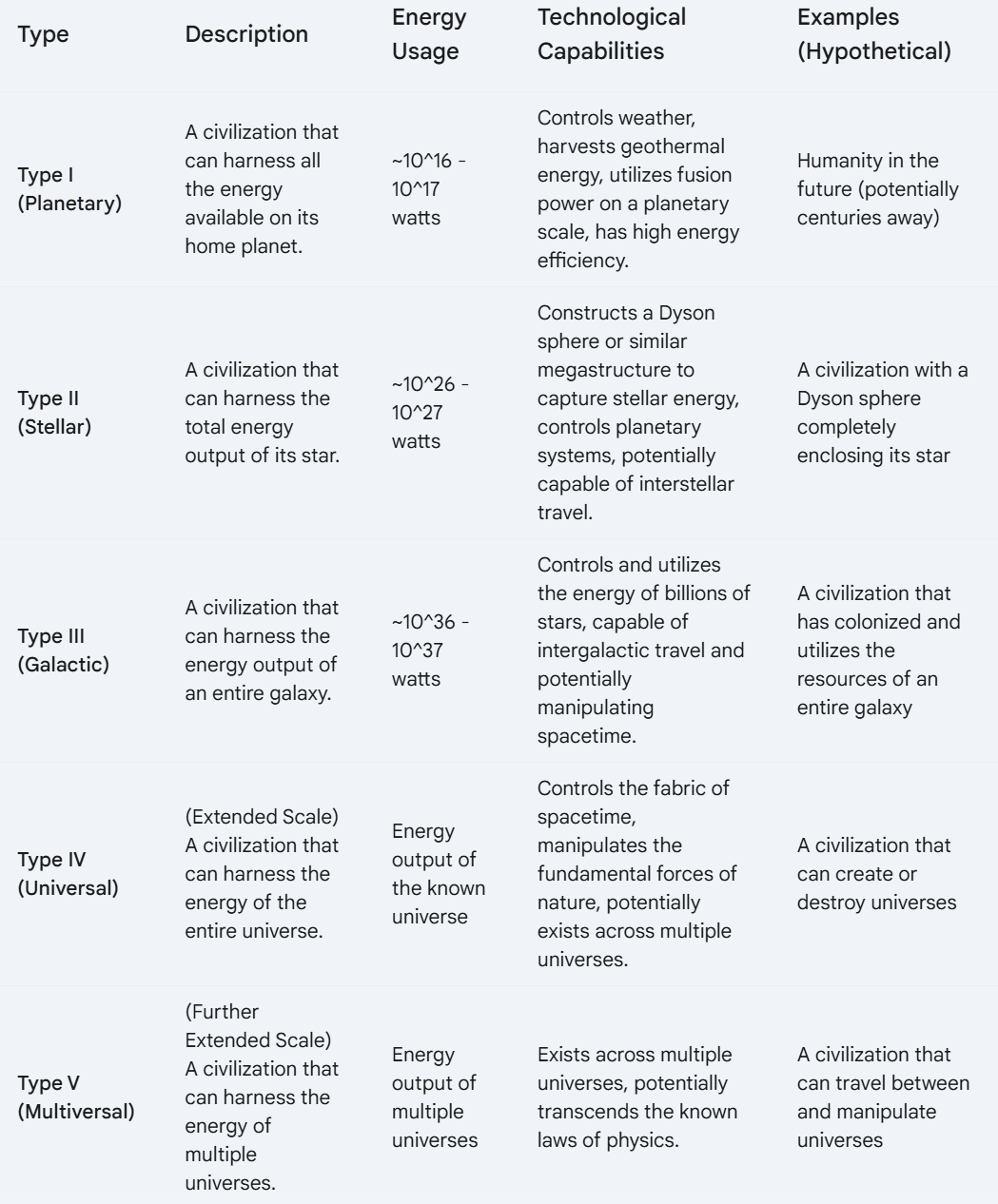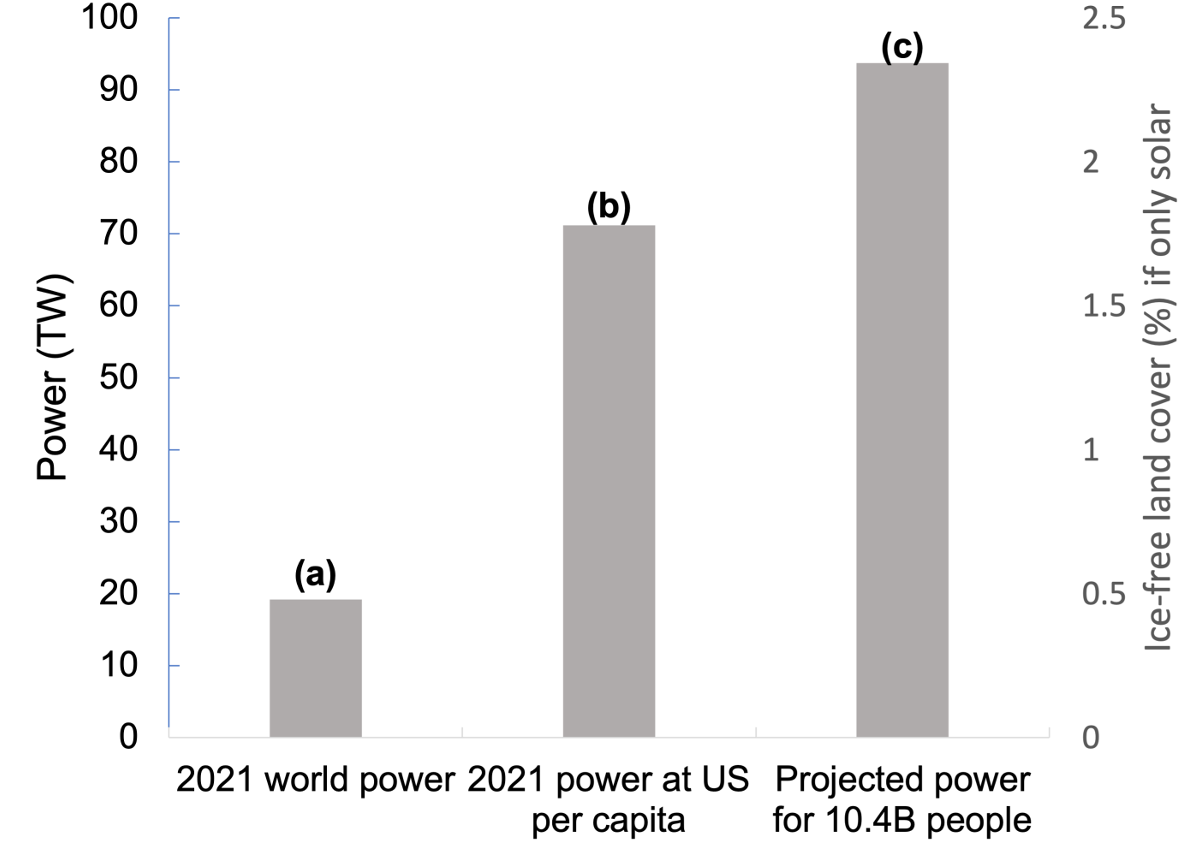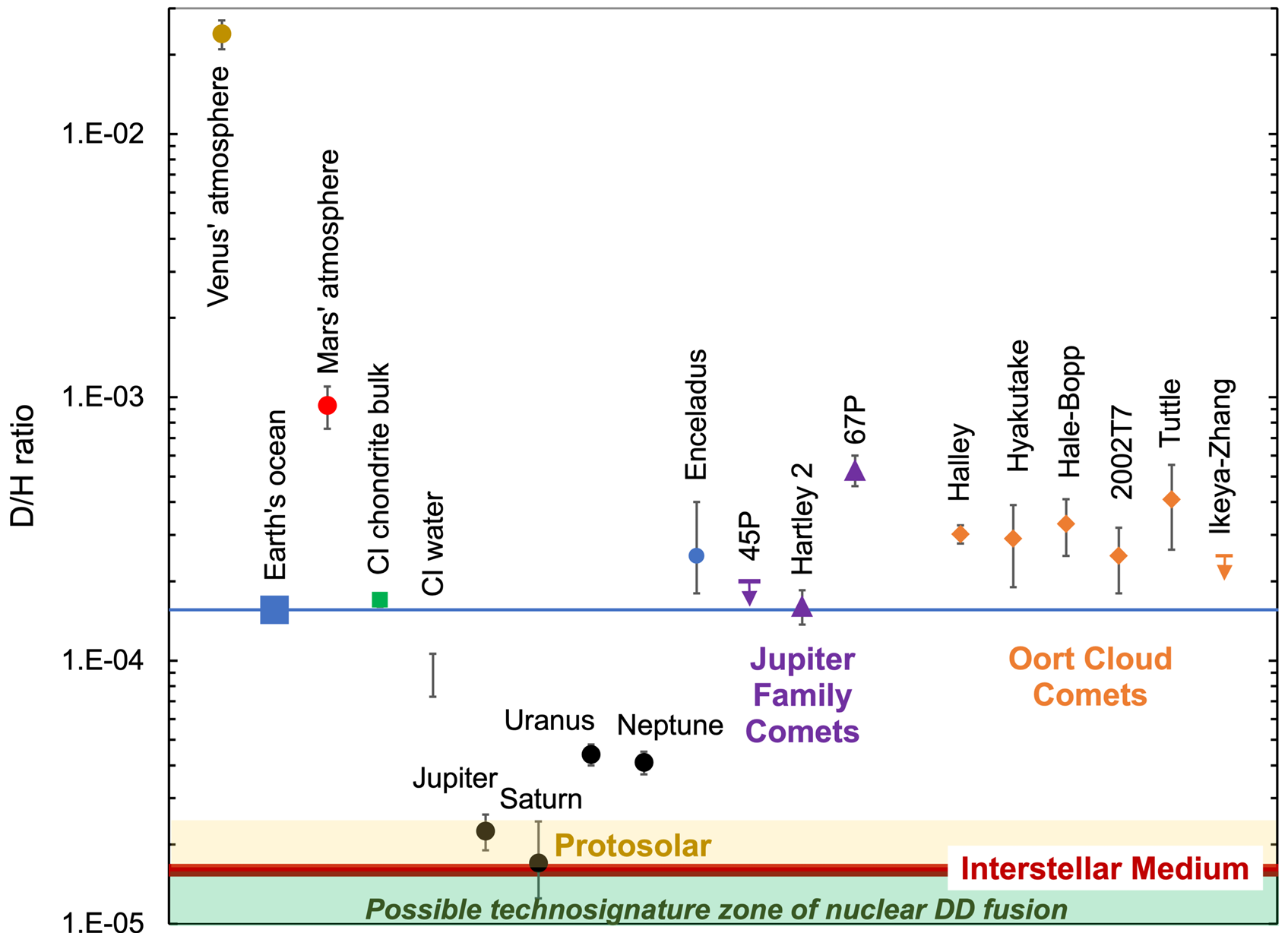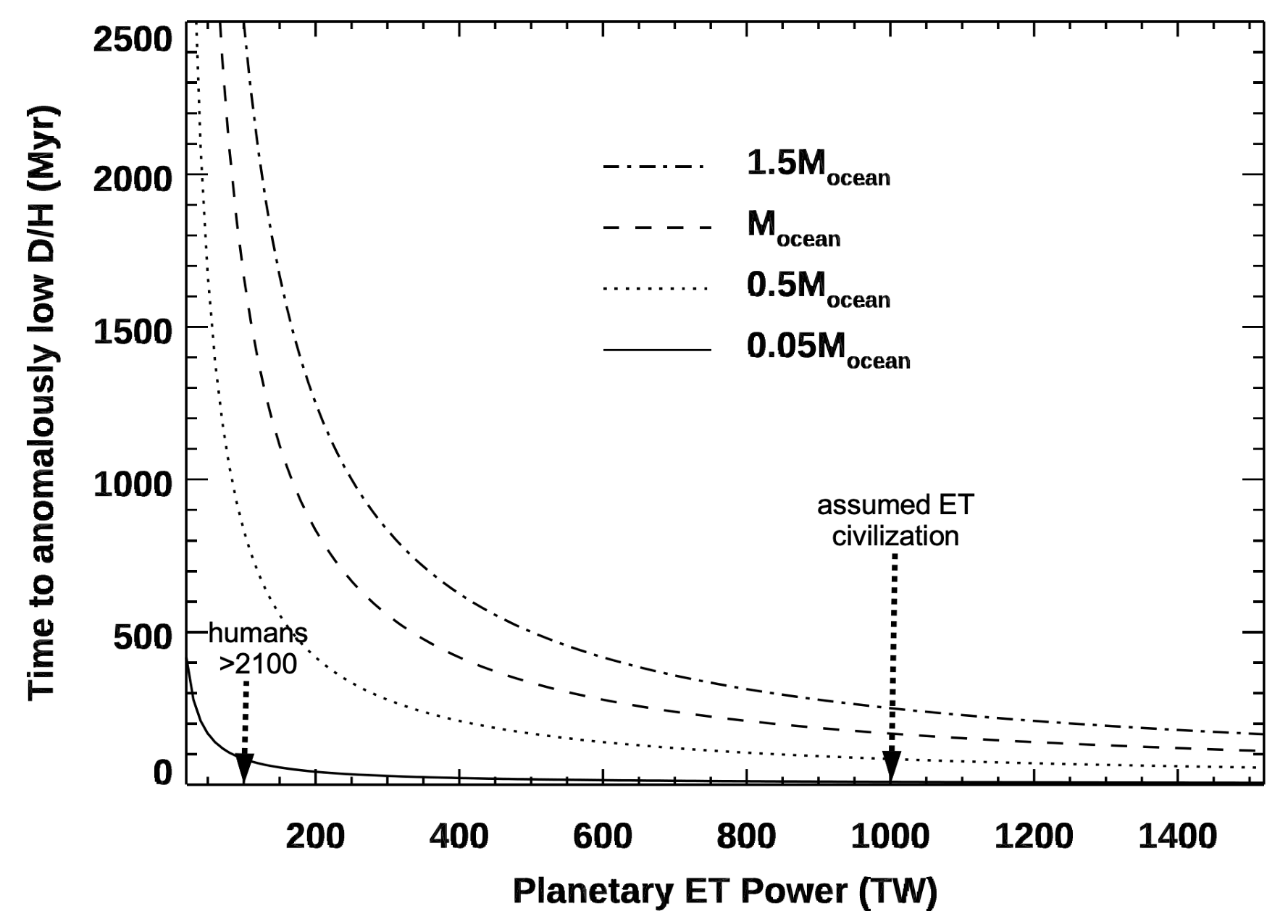As technological societies advance, their energy demands skyrocket, pushing them up the Kardashev scale. While fossil fuels, wind, and solar power offer solutions, they’re limited by efficiency, material availability, or environmental impact.
For any advanced civilization, nuclear fusion might be the ultimate energy source—a possibility that offers an intriguing avenue for detecting alien life.
Fusion energy, specifically deuterium-deuterium (DD) fusion, is considered an ideal long-term energy solution. Deuterium, an isotope of hydrogen, is abundant in water, making it a reliable source for fusion reactions. By fusing deuterium nuclei, immense energy is released, a process far more efficient than current energy systems on Earth.
For civilizations with oceans rich in water, deuterium would provide energy for millennia. However, this process leaves a detectable technosignature: a measurable depletion in the deuterium-to-hydrogen (D/H) ratio in a planet’s water and atmosphere.

On Earth, deuterium occurs naturally, with one atom in every 6,240 hydrogen atoms, amounting to about 35 grams per ton of seawater. When deuterium undergoes fusion, it produces helium and releases around 335 gigajoules of energy per gram.
If Earth were to achieve fusion-powered energy consumption at ten times the predicted human demand in 2100, its D/H ratio would decrease to levels resembling the interstellar medium in approximately 170 million years. On planets with smaller oceans, this shift could occur in as little as one to ten million years.
This depletion could serve as a detectable technosignature for astronomers. As David Catling of the University of Washington explains, “Measuring the D/H ratio in water vapor on exoplanets is certainly not a piece of cake. But it’s not a pipe dream either.”
His recent study, published in The Astrophysical Journal and arXiv, highlights how advanced alien societies might leave enduring traces of their energy consumption.
Related Stories
Traditional searches for alien life focus on biogenic gases, such as methane and oxygen, that hint at microbial or plant-like organisms. However, technological societies might also alter their planetary environments in ways detectable through technosignatures.
For instance, industrial pollutants like nitrogen oxides and chlorofluorocarbons have been proposed as indicators of immature civilizations, but their fleeting presence—often just a few centuries—makes detection unlikely.
D/H anomalies, in contrast, could persist for millions or even hundreds of millions of years, significantly increasing the chances of discovery.
Catling’s study suggests that advanced telescopes could detect these anomalies by analyzing the spectral features of water vapor in exoplanetary atmospheres. Semi-heavy water (HDO) and ordinary water (H2O) produce distinct spectral lines, allowing precise measurements of isotopic ratios.

Space-based telescopes, such as the James Webb Space Telescope (JWST) and proposed missions like NASA’s Habitable Worlds Observatory (HWO) and the Large Interferometer For Exoplanets (LIFE), hold promise for such observations.
JWST has already demonstrated its capability by detecting water vapor on exoplanets. Future telescopes equipped with higher-resolution spectroscopy could refine these measurements, making it possible to detect anomalous D/H ratios indicative of nuclear fusion technology.
Fusion’s appeal lies in its efficiency and longevity. Unlike nuclear fission, which relies on finite supplies of uranium and produces hazardous waste, fusion offers a cleaner and more sustainable energy source.
While early fusion efforts on Earth focus on deuterium-tritium (DT) reactions, the limited availability of tritium and the necessity for lithium breeding make DD fusion a more practical option for long-term use. Deuterium, extracted from seawater, ensures an almost inexhaustible fuel supply.

However, even fusion has its limits. A global civilization consuming energy at 1,000 terawatts—ten times the projected human demand in 2100—would deplete oceanic deuterium reserves within 170 million years.
If energy consumption reached 10,000 terawatts, the resulting heat release would drastically affect planetary climates, causing temperature increases of up to 15°C. Advanced civilizations would need to address these challenges through energy curtailment or geoengineering.
Catling’s study posits that long-lived civilizations might prefer DD fusion for its reliability and minimal environmental impact. “If the D/H ratio in the water of an exoplanet was found to be substantially below interstellar medium values, it would be strange and anomalous,” the researchers note. Such a discovery would strongly suggest a technologically advanced society had once thrived there, even if it no longer existed.
The search for technosignatures extends beyond fusion-induced D/H anomalies. Astronomers have considered other possibilities, such as Dyson spheres—megastructures encircling stars to harvest energy—and industrial byproducts. While these remain hypothetical, they reflect the ingenuity of scientists exploring every conceivable avenue for finding extraterrestrial intelligence.

Advances in telescope technology have revolutionized this field. Ground-based observatories like the European Extremely Large Telescope (E-ELT) use high-dispersion spectroscopy to analyze narrow spectral features. Space-based missions, such as HWO and LIFE, aim to directly image Earth-like exoplanets and study their atmospheres.
LIFE, for instance, proposes using a nulling interferometer to detect mid-infrared emissions, while HWO focuses on reflected light at ultraviolet, visible, and near-infrared wavelengths.
While detecting technosignatures remains challenging, each discovery brings us closer to answering fundamental questions about our place in the universe. Are we alone? Or do other civilizations face the same energy dilemmas, leaving behind traces for us to find?
Fusion energy not only represents humanity’s future but also offers a beacon for detecting extraterrestrial life. As telescopes grow more powerful and our understanding of alien technosignatures deepens, the search for advanced civilizations will continue to inspire and challenge us.
Note: Materials provided above by The Brighter Side of News. Content may be edited for style and length.
Like these kind of feel good stories? Get The Brighter Side of News’ newsletter.
The post Detecting nuclear fusion energy could reveal advanced alien civilizations appeared first on The Brighter Side of News.